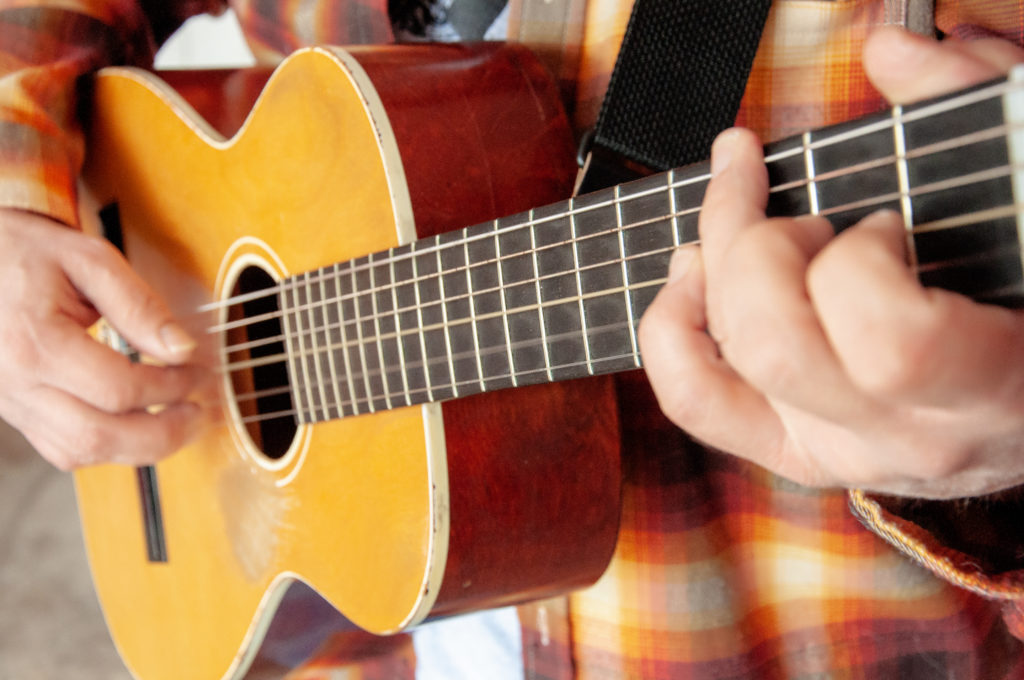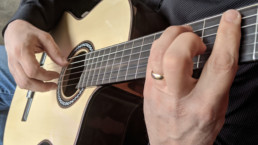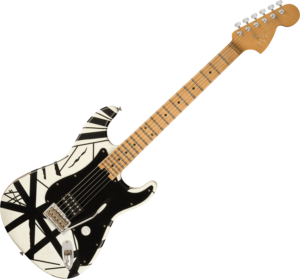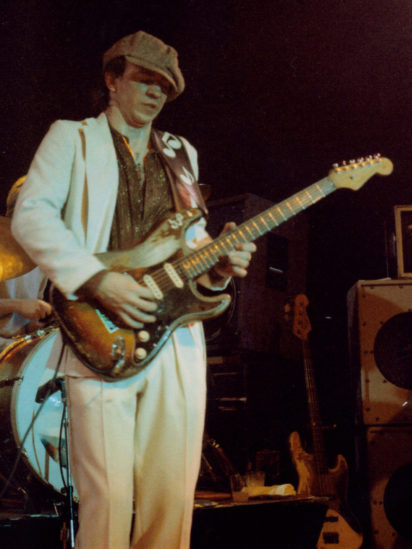Touch and Tone
The best compliment I ever got on my tone was from the producer on a recording session.
He said, “you’re the only guy I know who can make a Gibson sound like a Fender”.
He didn’t mean that he liked Fenders better than Gibsons. He meant that he heard the tone, not the guitar.
Playing a different guitar can be like putting on a different mask. Playing a country song? Pick up a Telecaster. Channeling Stevie Ray Vaughan? Only a Strat will do. Of course the sonic quality of each guitar IS part of the sound of a particular style or artist. And if you’re really trying to nail a particular player’s tone, knowing their signal path from fingers to speaker is part of the picture. But no amp, pedal, or new guitar is going to make you sound just like your heroes.
“Your tone is your face. Why would you want to look like someone else?” – Carlos Santana
Eddie Van Halen talked about learning to make different sounds by just hitting the guitar different ways, because he couldn’t afford to buy lots of gear. Of course, he did make technical changes to his rig itself. But his sound was more than the gear, it was in his hands. Just give a listen to “Spanish Fly” and it’s obvious who it is. Even on an acoustic guitar without his usual setup, EVH sounded like EVH. Stevie Ray Vaughan on a 12-string acoustic on “Life By The Drop” is totally recognizable without his signature Strat sound. The instrument and amp and signal path are only part of the story. The proportion of your fingers and hands, the shape of the instrument you play and how it lays on your body – even the way you hold the guitar has an impact on tone.
Developing your touch means educating your picking hand.
Learn to be more aware of your picking hand attack, and notice how the string FEELS as you move through it. Pay attention to the tactile feedback, gauging how much resistance you feel from the string and the way it responds. Are you pushing the string out of the way, snapping it from underneath, or just gliding across the surface? Each of these is a different movement and a completely different sound.

If you always play plugged-in with effects, you might be masking this relationship.
You might be surprised how much you can learn about touch from an unplugged electric guitar. The increased dynamic and tonal control you get from practicing “naked” also allows you to use effects more expressively.
Your choice of string gauge and pick is part of this puzzle too, of course. Changing either changes the resistance equation, and tactile feedback helps you adjust accordingly. I used to use light picks on heavy strings because my right hand was so heavy. Over the years I’ve gone to lighter strings and heavier picks, which requires a light touch and a lot more control. But I find that the lighter my touch gets, the better my sound is.
A heavy-handed attack has a sound of its own and might be the right thing in some settings. But that heaviness might have a lot more to do with the size and proportions of the player that hand belongs to.
At the end of the day, your rig is like a suit you put on.
It’s style, fashion, and self-expression. A set of choices a player presents to the world that was something about who they are. But to be more than an empty suit, develop the voice of the player inside. That starts with touch.
Interested in more guitar lessons and courses? Check out JamPlay.com. JamPlay has over 450 guitar courses from 120+ instructors, and online guitar lessons tailored to every skill level, music genre, and playing style. Click here to learn more.
Dave Isaacs has established himself as a guitar teacher extraordinaire, having built a strong set of educational curriculums for beginner, intermediate, and advanced guitar players alike. Dave shares his expertise largely through video platforms, but also through his thoughtful writing. You can take guitar lessons from Dave Isaacs via his comprehensive video guitar courses on JamPlay.com.
Share this
Become a JamPlay member for unlimited access to 7000+ guitar lessons and 120+ artists and instructors. View membership plans ›






